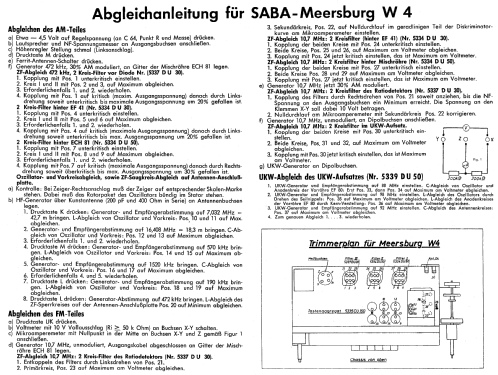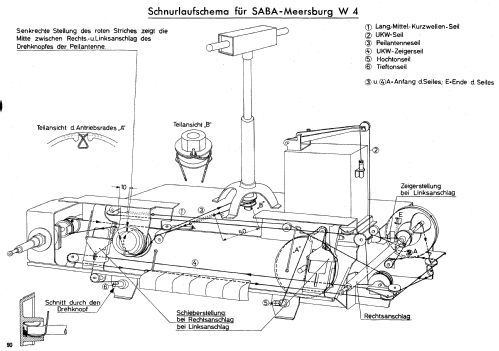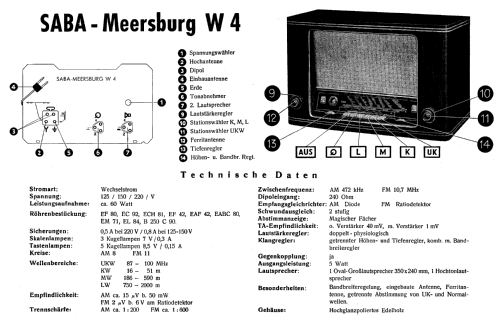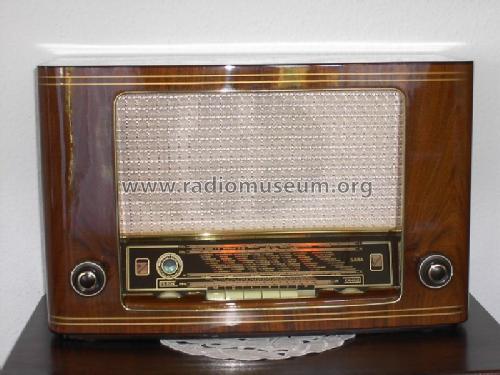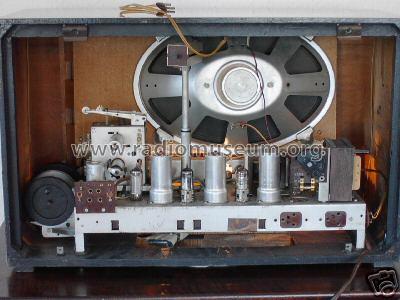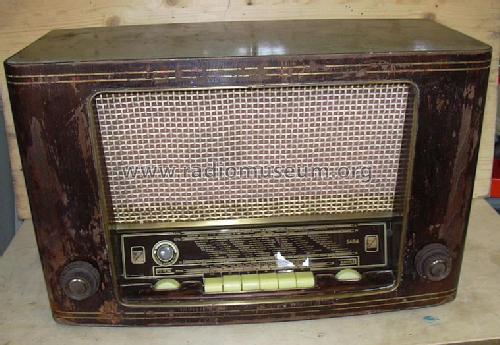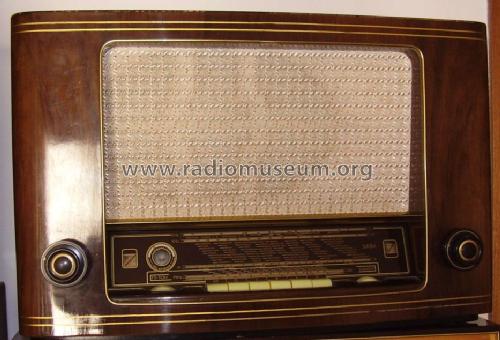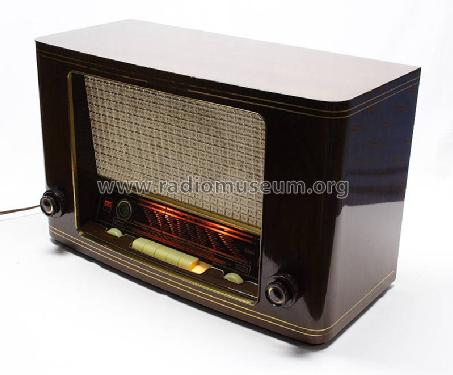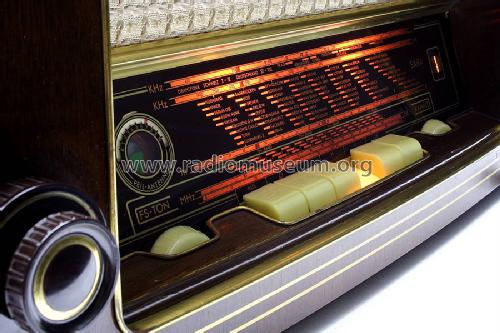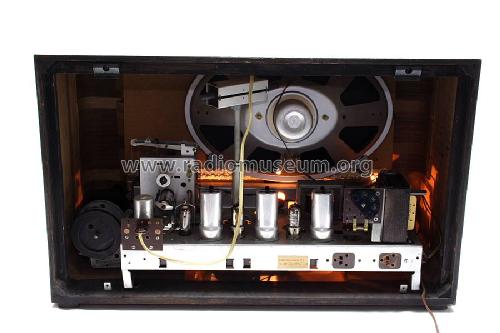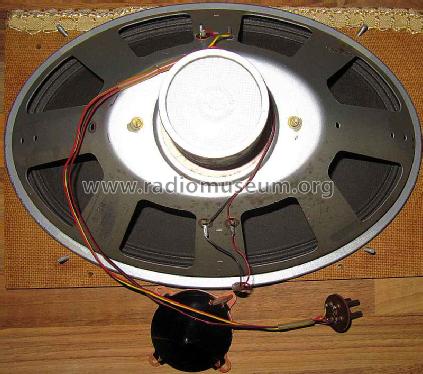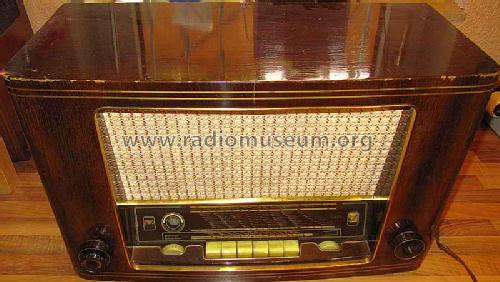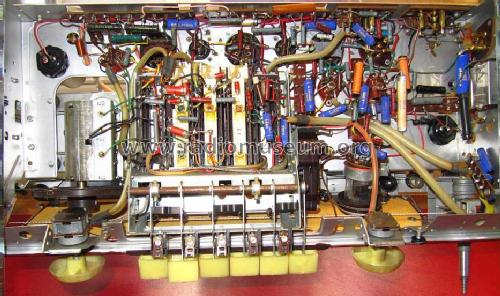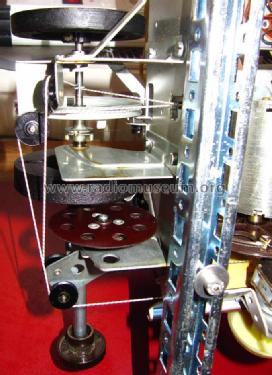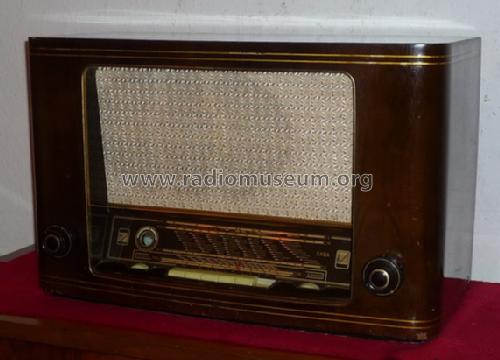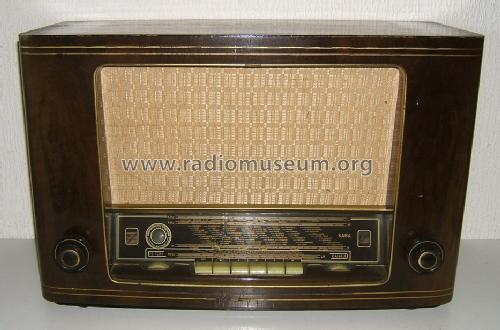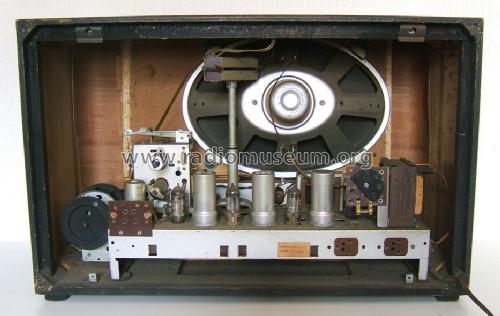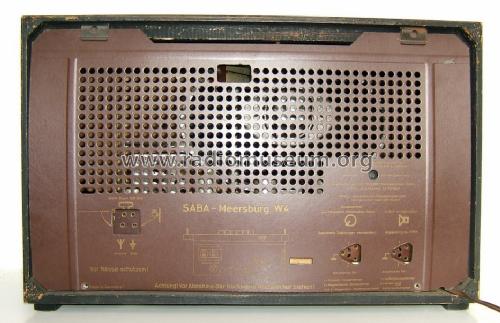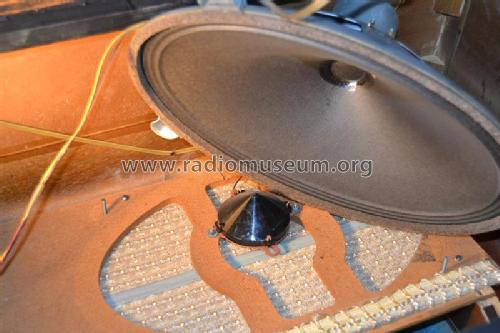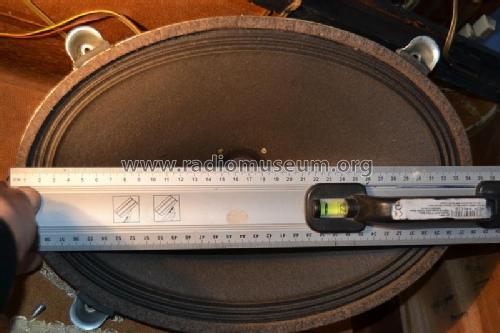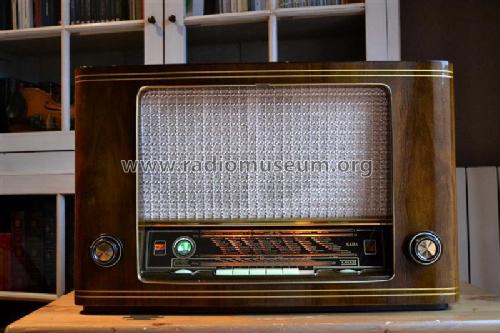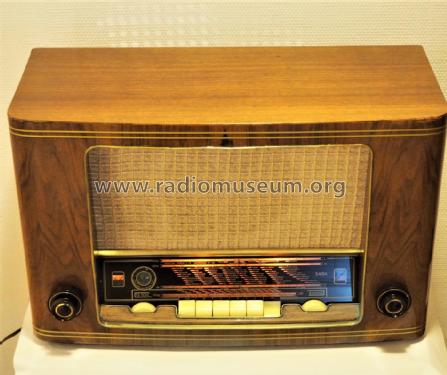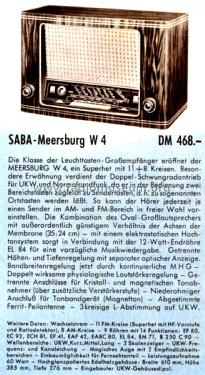Meersburg W4
SABA; Villingen
- País
- Alemania
- Fabricante / Marca
- SABA; Villingen
- Año
- 1953/1954
- Categoría
- Radio - o Sintonizador pasado WW2
- Radiomuseum.org ID
- 20024
-
- Brand: Schwer & Söhne, GmbH
Haga clic en la miniatura esquemática para solicitarlo como documento gratuito.
- Numero de valvulas
- 8
- Numero de transistores
- Semiconductores
- B250C90
- Principio principal
- Superheterodino en general; ZF/IF 472/10700 kHz
- Número de circuitos sintonía
- 8 Circuíto(s) AM 11 Circuíto(s) FM
- Gama de ondas
- OM, OL, OC y FM
- Tensión de funcionamiento
- Red: Corriente alterna (CA, Inglés = AC) / 125; 150; 220 Volt
- Altavoz
- 2 Altavoces
- Potencia de salida
- 5 W (max.)
- Material
- Madera
- de Radiomuseum.org
- Modelo: Meersburg W4 - SABA; Villingen
- Forma
- Sobremesa de botonera.
- Ancho, altura, profundidad
- 610 x 385 x 276 mm / 24 x 15.2 x 10.9 inch
- Anotaciones
-
Drehbare Ferritantenne, AM-Bandbreitenregelung durch kontinuierliche MHG, 3-kreisige L-Abstimmung auf UKW (Variometer).
Lautsprecher: Elliptisch, 35 x 24 cm und elektrostatischer Hochton-Lautsprecher.
Saba Meersburg W4 ist 1 cm breiter als das Modell Meersburg W3, die Rückwand wurde entsprechend verbreitert.
Die Modelle 4 baut SABA gemäss Kundendienstschrift 1953/54 nur im Jahre 1954. Trotzdem führen wir sie hier für 1953/54, um Recherchen zu erleichtern.
Erstmalig wird Meersburg W4 im Nachtrag Frühjahr 1954 des Rundfunk-Phono-Fernseh-Katalogs gezeigt, ein Modell der Zwischensaison. Der Rundfunk- Phono- und Fernseh-Katalog 1954-1955 des Fachverlags Funk-Kurier (Thiele) führt dieses Modell ebenfalls in seiner Ausgabe vom Sommer 1954. In der zweiten erweiterten Neuauflage vom Herbst 1954 ist Meersburg W4 dagegen nicht mehr enthalten.
- Peso neto
- 14.5 kg / 31 lb 15 oz (31.938 lb)
- Precio durante el primer año
- 468.00 DM
- Mencionado en
- -- Original-techn. papers.
- Documentación / Esquemas (1)
- Rundfunk-Phono-Fernseh-Katalog Nachtrag Frühjahr 1954 S.35 (Thiele)
- Documentación / Esquemas (2)
- Rundfunk- Phono- und Fernseh-Katalog 1954-1955 S.44 (Thiele)
- Otros modelos
-
Donde encontrará 1652 modelos, 1510 con imágenes y 1191 con esquemas.
Ir al listado general de SABA; Villingen
Colecciones
El modelo Meersburg es parte de las colecciones de los siguientes miembros.
Contribuciones en el Foro acerca de este modelo: SABA; Villingen: Meersburg W4
Hilos: 2 | Mensajes: 4
Hallo liebe Sammlerkollegen,
beim Saba Meersburg W4 habe ich festgestellt, dass man den Frequenzbereich mit einem kleinen Handgriff auf 87MHZ-105MHz erweitern kann. Dazu muss man nur die Anschlagslasche des grossen Alurades am UKW-Tuner umbiegen. Da die UKW-Skala bei diesem Modell zur AM-Skala etwas nach links verschoben ist geht das auch wunderbar mit dem Zeigerlauf. Dieser läuft analog zur Skala von 87MHZ-100MHz, ab 100MHZ - 105,xMHz im "Blindflug" rechts hinter dem dunklen Teil der Skala. Alle Sender liegen genau da auf der Skala,wo sie hin gehören, der "letzte" Sender mit der höchsten Frequenz den man empfangen kann ist bei mir Radio7-Ulm, bei 105MHz. 10 Minuten Aufwand, ohne irgendwas sonst zu verstellen. Ich kenne sonst kein Modell, wo das so geht. Wahrscheinlich/Vielleicht geht das bei einem anderen Saba-Modell aus der gleichen Saison auch. Hat da jemand die gleiche Erfahrung gemacht?
Mit besten Grüssen
Dirk Fischer
Anexos
- Seillauf W4 (64 KB)
Dirk Fischer, 09.Jun.07
My apologies for the incorrect model designation in the Title
The FM unit is installed in the Meersburg W according to the rear panel
Reviewing the schematic for the model 840-780a (dated 6.6.50) and presumably for radios produced in 1950/51, I have not completely understood the function of the right front knob and the lower right rear knob on the side of the radio.
I believe the use and function of the lower right rear knob is the same as that of the Saba S455WK that I have.
I believed the right front knob, however, is used to select the Mode of Operation as follows:
with 5 possible selections, I estimated the Modes to be---
1. TA only
2. All except UKW operation
3. UKW only
4. UKW muting
5. Sensitivity selection (weak or strong) and EM4 circuitry correlation
I realize there were many issues being resolved, after the Copenhagen convention, and improvements to reduce interferences and allow for interstation suppression of "excess noise". The use of the EQ80 FM discriminator (the phase detectors) appears to be somewhat brief in FM circuit developments, and also possibly added to the earliest models to reduce the number of tubes in the radio.
I would be most appreciative to determine the proper use and function of these knobs.
Respectfully,
Robert
Robert Sarbell † 22.3.22, 10.Aug.05

